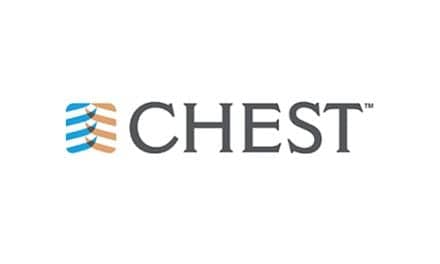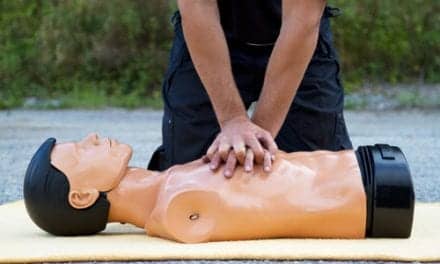 |
In December 2007, the National Board for Respiratory Care (NBRC), Olathe, Kan, introduced a new credential for certified and registered respiratory therapists: the Sleep Disorders Testing and Therapeutic Intervention Respiratory Care Specialist (CRT-SDS or RRT-SDS). The program has been designed to demonstrate a CRT/RRT’s competency in the specific area of sleep diagnostics.
The idea was initiated by a sponsoring association and supported with a viability study, in keeping with the NBRC’s credential development process. Once it was proven feasible, the NBRC moved ahead, but lost some supporters along the way. The primary concern was competition and confusion with the Registered Polysomnographic Technologist (RPSGT) credential. The NBRC, however, maintains there is no competition, citing the examination contents as evidence.
The NBRC credentialing examinations are hierarchical to avoid repetitive testing. Its specialty exams, such as the sleep disorders specialty (SDS) and the neonatal/pediatric respiratory care specialty, do not duplicate material covered on the CRT and RRT exams. So the new SDS exam focuses solely on sleep-related knowledge and skills in contrast to the RPSGT program, which encompasses more general or basic material.
NBRC’s program development process included a job analysis to determine specific test material as well as research into the potential testing population. The NBRC is currently conducting the final step in the credential’s development: validation. “Once we get enough people to take the test, the validation study will evaluate the test against on-the-job performance to determine the correlation between on-the-job and exam performance,” says Lori M. Tinkler, MBA, NBRC chief operating officer and associate executive director.
The Development Process
Since the exam’s debut in December, about 16 people have sat for the SDS. Roughly 20 more are needed to validate the new test, according to Tinkler. The NBRC had expected more people to sit for the exam right away, but six rather than the estimated 60 participated at the American Association for Respiratory Care (AARC) Convention, where the test was launched.
The NBRC has budgeted for about 300 people to sit for the exam in 2009. “It’s too early to tell whether we will hit that or not,” says Tinkler. No reason has been identified for the slow adoption, but NBRC’s research had justified the numbers. The development process includes a “personnel survey study to determine if there is a significant population to warrant the test,” says Tinkler.
 |
| Only respiratory therapists who already hold an NBRC CRT or RRT credential and have experience or education in the field of sleep medicine are eligible to sit for NBRC’s new sleep credential. |
Eventually, more CRTs and RRTs can be expected to sit for the exam. If they do not, the exam will not be discontinued. “The NBRC has never had a precedent to take an exam away,” says Tinkler.
Every credential developed by the organization undergoes the same five-step process—a viability study, a personnel survey study, job analysis, examination development, and validation. The sleep disorders specialty was developed on a fast track and completed in a little more than 2 years. “The viability study was conducted in September 2006, and the first exam administered in December 2008,” says Tinkler. She compares the process to the last specialty examination to be developed: neonatal and pediatric. That examination was introduced more than 15 years ago and took roughly 5 years to develop.
Viability: A Difference of Opinion
Every credential developed by the NBRC is first proposed by a sponsoring organization. The suggestion for the new sleep credential for CRTs and RRTs came from the AARC. “The reasoning behind the request is [that the association] felt that respiratory therapists are qualified and that it has always been within their scope of practice to perform sleep testing and intervention,” says Tinkler.
The certification is a way to show a specialty competency in sleep diagnostics and therapeutic intervention, elevating the status of the respiratory therapist. As with any credential, the program provides patients and hiring organizations with confidence in the skills and capabilities of the credentialed respiratory therapist.
Previously, respiratory therapists could prove their competency in the field of sleep by sitting for the RPSGT examination. The Board of Registered Polysomnographic Technologists (BRPT) offers three pathways to obtain this sleep technology credential: one for candidates with 18 months of on-the-job polysomnographic (PSG) experience; one for credentialed clinicians—such as nurses, CRTs, and RRTs—with 6 months of on-the-job PSG experience; and one for graduates of Commission on Accreditation of Allied Health Education Programs (CAAHEP)-accredited PSG technology programs.
The scope of information covered in the PSG credential program overlaps some of the material covered by the CRT and RRT credentials, such as CPAP and bilevel. Advocates for the new NBRC sleep certification wanted to avoid that redundancy. The repetition contradicts NBRC’s hierarchical testing philosophy.
Some organizations, notably the BRPT, however, felt the overlap in job responsibility would create more confusion than the overlaps in testing. The BRPT released a statement suggesting the new SDS credential would be counterproductive. Specific concerns included confusion in the patient and sleep community and complications in educational pathways.
The differences of opinion led some early supporters to withdraw their backing after the NBRC concluded the viability study. These included the American Academy of Sleep Medicine (AASM), BRPT, and the American Association of Sleep Technologists (AAST). The American Thoracic Society (ATS), the American College of Chest Physicians (AACP), the AARC, and the NBRC went forward with development.
 |
| “Respiratory therapy has always had sleep within its scope of practice. This credential elevates the therapist’s level and role …,” says the NBRC’s Lori Tinkler, about the new sleep credential. |
Test Preparation
Outside of the initial controversy, the program proceeded smoothly. “There were no real challenges in developing this examination,” says Tinkler.
The development committee included sleep specialists from the NBRC’s board as well as experts recruited from the sleep field. Test content was based on the results of a national job analysis conducted in late 2006 and 2007.
Surveys targeted health care professionals involved in the delivery of care to patients with sleep disorders. Results were compiled to determine the relative importance of job tasks, and that data was used to organize the material covered on the new examination. Subjects covered by the CRT and RRT examinations were excluded.
The result is a curriculum specifically focused on sleep. Topics include the identification and care of at-risk individuals, sleep disorders testing, study analysis, administrative functions, and treatment plans. A detailed content outline is available on the NBRC Web site. “The exam goes beyond diagnostic aspects into the therapeutic intervention and treatment of these disorders,” says Tinkler.
“In terms of preparation, we have a short practice test of sample questions available and are developing a full-length self-assessment examination that will be available later this year,” says Tinkler. Other preparation comes in the form of previous education and clinical experience.
Eligibility
Only respiratory therapists who already hold an NBRC certified or registered respiratory care credential and have experience or education in the field of sleep medicine are eligible to sit for the new sleep credential. Specific education requirements include completing a CAAHEP-accredited respiratory therapist program with a sleep add-on track. Experience translates to full-time work in a sleep diagnostics and treatment setting under medical supervision. CRTs will need 6 months of this experience post-certification; RRTs require 3 months.
As with other NBRC credentials, recertification will be required every 5 years through the organization’s Continuing Competency Program (CCP). “We are still figuring out what those requirements are,” notes Tinkler, but suggests they will be similar to those of existing credentials.
|
Editor’s Note |
Credential programs share similar goals—to objectively measure the knowledge, skills, and abilities that the professional needs to use to successfully care for patients. Respiratory therapists who obtain the new Sleep Disorders Testing and Therapeutic Intervention Respiratory Care Specialist credential will have proven their competency in the area of sleep disorders and therapeutic intervention.
The benefits of the extra work can include higher pay, hiring advantages, and/or greater opportunity in the medical community (eg, promotion pathways). “We hope health care institutions will recognize the credential as they have others, either by requiring that credential for hiring or by elevating [the credentialed professional’s] level of pay,” says Tinkler.
As for the new sleep credential’s impact on the medical community as a whole, Tinkler suggests the differences in existing procedures and workflows will be few. “Respiratory therapy has always had sleep within its scope of practice. This credential elevates the therapist’s level and role to patients and employers,” says Tinkler.
Renee Diiulio is a contributing writer for RT. For further information, contact [email protected].
Sleep Skills
 |
Certified and registered respiratory therapists interested in pursuing the new Sleep Disorders Testing and Therapeutic Intervention Respiratory Care Specialist Credential (CRT-SDS or RRT-SDS) available from the National Board for Respiratory Care (NBRC) can find more information on the NBRC Web site at www.nbrc.org. Information includes the location of assessment centers, a detailed content outline, a free practice examination, answers to frequently asked questions, and application materials.
Program information is focused on sleep. The 180-question examination covers three levels of testing (recall, application, and analysis) in areas that include pretesting, sleep disorders testing, study analysis, administrative functions, and treatment plans. Sample topics within each area include:
Pretesting
- the identification and care of at-risk individuals, including the ability to recognize signs and symptoms associated with sleep disorders as revealed by history, interview, or clinical assessment;
- the selection of the appropriate study procedure and corresponding montage; and
- the identification of patient medications that may affect test results.
Sleep Disorders Testing:
- the performance of signal maintenance during testing;
- the ability to recognize disorders during testing, including sleep conditions (apnea, parasomnias, bruxism, and limb movements) and cardiac, neurological, pulmonary, and gastroesophageal reflux disorders; and
- how to implement interventions for treatment, medical emergencies, and unsafe testing environments.
Study Analysis:
- proper review of records;
- sleep staging and scoring; and
- identification and documentation of sleep events.
Administrative Functions:
- data archiving, including HIPAA compliance;
- data maintenance, such as quality control and preventive maintenance; and
- data management.
Treatment Plans:
- the development of a treatment plan, including the assessment of a patient’s needs and barriers to optimal therapy as well as determination of the best equipment in terms of compliance and efficacy;
- assistance with the implementation of a treatment plan; and
- evaluation and documentation of a plan to enable necessary adjustments and ensure optimal compliance.
—RD









